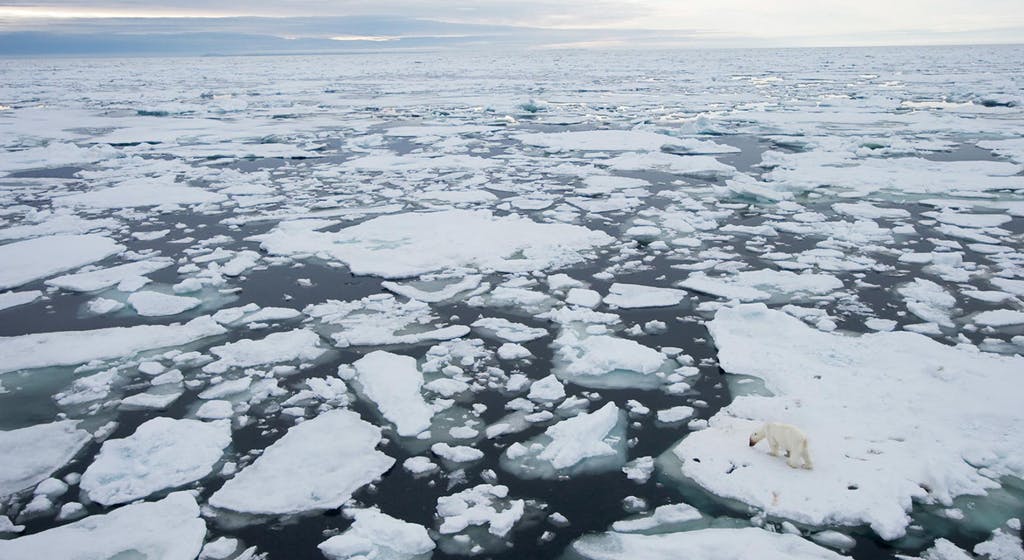In the New York Review of Books, scientist and conservationist Tim Flannery reviews two recent books about how climate change is imperiling the Arctic ecosystem: Brave New Arctic: The Untold Story of the Melting North by Mark C. Serreze, which explains how the rapidly warming Arctic affects the climate of the whole planet; and Extreme Conservation: Life at the Edges of the World by Joel Berger, which documents efforts to save cold-weather animals threatened by this warming. As Flannery notes, the rate at which the Arctic is warming has defied predictions and shocked scientists. They have sounded the alarm, but politicians and the public seemingly don’t want to hear it anymore. Here’s an excerpt from the article:
As Serreze makes clear, the Arctic climate system is now entering uncharted territory, with the computer models no longer providing a reliable guide to the future. Will we see an ice-free North Pole in 2018? Or an ice-free Arctic just twelve years from now, in the summer of 2030? Since the US North Pole Environmental Observatory was shut down in 2015, it has been much harder to answer such questions. And the public seems apathetic. On the phone with Serreze, the veteran journalist Seth Borenstein lamented, “How many times can a journalist report on what is happening in the Arctic before it becomes so repetitive that people lose interest?”
The great Dutch writer and historian Geert Mak once told me that in 1933 the Dutch newspapers were full of stories of the threat of Nazism, yet by 1938 those same papers were all but silent on the subject. Sometimes, it seems, threats to our future become so great that we opt to ignore them. Yet if we fail to act with the utmost urgency to slow climate change, we will invite catastrophe on all humanity.
Image: Arctic ice melt. Via National Geographic.
